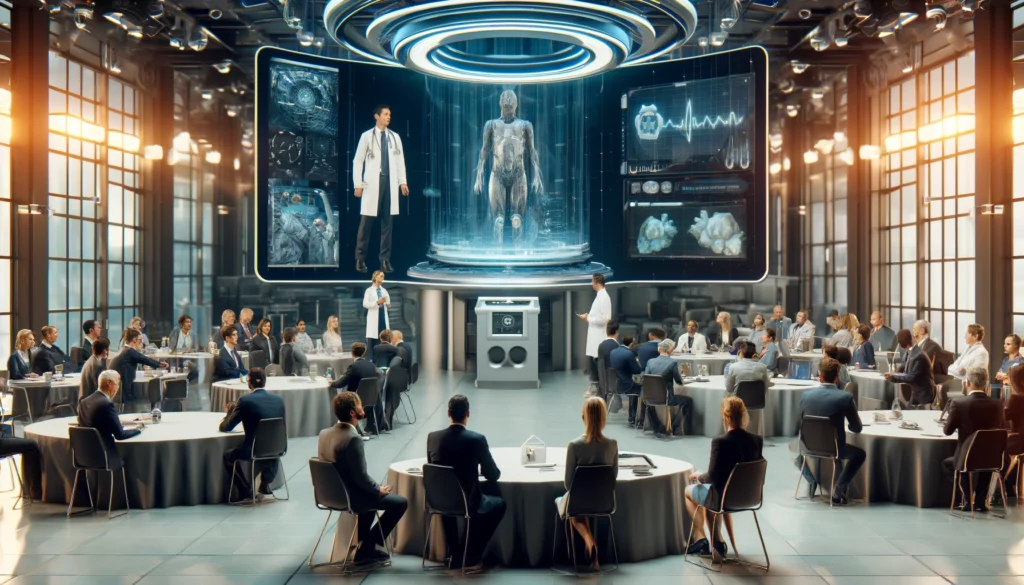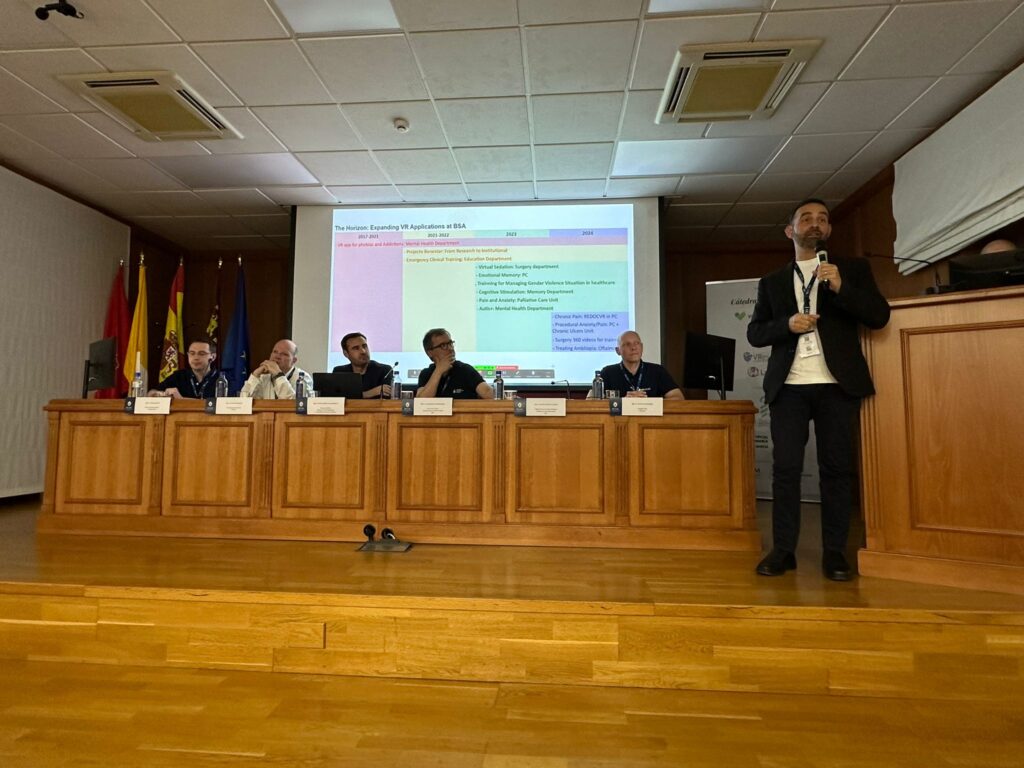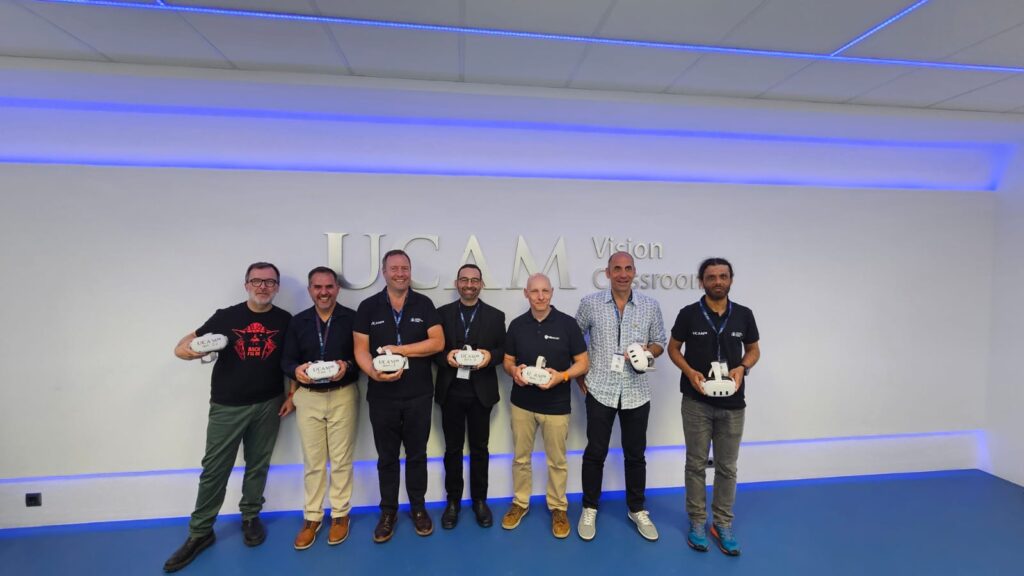
I recently had the honor of participating in the 1st International Symposium of Immersive Reality for Resuscitation, organized by the European Resuscitation Council (ERC) and the Catholic University of Murcia (UCAM). Held on May 24th and 25th, 2024, this groundbreaking symposium brought together a diverse and dynamic group of experts, academics, healthcare professionals, and technology developers from around the globe to explore the latest advancements in immersive technologies, including virtual reality (VR) and augmented reality (AR), and their transformative applications in resuscitation and emergency medical education.
The symposium was an intense and enriching journey that combined insightful keynote speeches, interactive sessions, hands-on workshops, and engaging panel discussions. It was a privilege to connect with many esteemed colleagues who are at the forefront of using immersive technologies to enhance medical education. These interactions not only led to new friendships but also opened up potential opportunities for future collaborations. Highlights of the event included innovative presentations on the future of education with spatial computing and the metaverse, as well as practical demonstrations of the latest VR tools for CPR training and best practices in designing educational VR content.
During my presentation, I had the opportunity to share the work we are doing at Badalona Serveis Assistencials (BSA) with VR in medical education and other healthcare projects. It was exciting to present alongside Tom Dolby, the Chief Technology Officer at i3 Simulations. Together, we shared our vision and experiences with i3 Simulations’ ResusVR app.

Our experiences resonated with many, highlighting both the significant progress made and the challenges that remain. While the potential of VR in medical training is vast, we collectively acknowledged that we are still on a journey towards fully realizing its capabilities.
Key Takeaways from the Symposium
- Critical Need for Standardized Guidelines: Establishing standardized guidelines for the development, implementation, and research of VR training programs is crucial. These guidelines ensure consistency and effectiveness across various training scenarios and facilitate uniform tools and variables in research projects. This standardization enables the generation of comparable and reliable results across different studies, setting a baseline for what effective VR training should entail.
- Robust Evidence of Effectiveness: Beyond establishing guidelines, there is a pressing need for empirical evidence to validate the effectiveness of VR in medical education. This involves rigorous educational research methodologies that compare VR training outcomes with traditional methods to provide quantifiable data supporting VR’s benefits. By aligning VR research with established educational research protocols, we can accurately assess its impact and refine VR training to meet specific educational goals effectively.
- Enhanced Feedback Mechanisms: While current VR training offers advanced tools like haptics for real-time feedback, which are crucial for refining mechanical skills such as chest compressions and ventilation techniques, there is still progress to be made. The focus should shift towards defining and understanding where VR can have a true and positive impact in medical education to fully leverage its capabilities.
- Integration with Traditional Training Methods: VR should be integrated with traditional training methods to form a blended teaching system that enhances overall educational effectiveness. Blended teaching in this context refers to a coherent integration of both VR simulations and conventional hands-on practices. This approach not only provides immersive virtual experiences but also retains the essential tactile feedback from physical interactions, ensuring a comprehensive learning experience that caters to multiple learning styles and enhances skill retention.
It is evident that to achieve these objectives, we must continue working diligently to improve the systems, develop better tools, and build strong scientific evidence supporting the use of immersive technology in medical education.
Overall, the symposium was a significant step forward in the exploration of immersive technologies for resuscitation and medical education. As we move forward, the connections and knowledge gained from this event will undoubtedly play a crucial role in advancing our efforts to improve medical education through VR.
I extend my heartfelt thanks to the organizers and participants for making this symposium a remarkable experience, especially to Manuel Pardos, Pau Guardiola, Daniel Guillén and Andrés Pedreño from UCAM and Federico Semeraro, Robert Greif, Koen Monsieurs and Nino Fijačko from ERC.

Together, we are paving the way for a future where immersive technologies play an integral role in medical training, ultimately improving patient outcomes and saving lives.
For more information about the symposium and future events, visit https://eventos.ucam.edu/109505/detail/i-simposio-internacional-de-realidad-inmersiva-para-reanimacion.html
This article was originally published on vrforhealth
